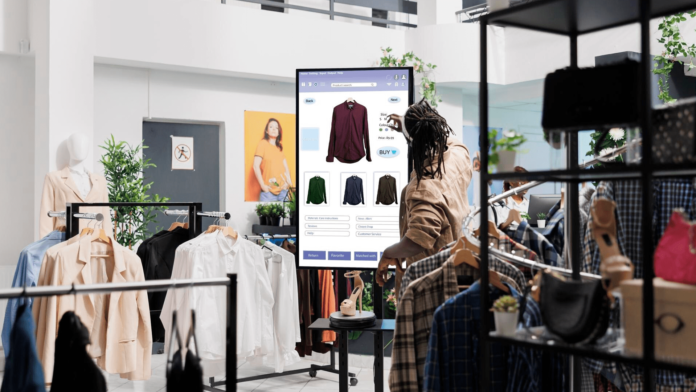BlueWeave Consulting, a leading strategic consulting and market research firm, in its recent study, estimated the India Fashion Retail Market size by value at USD 58.16 billion in 2023. During the forecast period between 2024 and 2030, BlueWeave expects the India Fashion Retail Market size to expand at a CAGR of 12.65% reaching a value of USD 125.31 billion by 2030. The Fashion Retail Market in India is propelled by the increasing disposable incomes, rapid urbanization, and burgeoning middle class. In recent years, Indian apparel retail has witnessed a significant uptick, despite the challenges posed by the pandemic in 2020. The sector experienced a robust recovery from late 2021 onwards, buoyed by increasing consumer confidence as vaccination drives accelerated and economic activities resumed. Notably, a surge in “revenge buying” contributed to substantial sales spikes, particularly in apparel and fashion accessories. Also, strategic acquisitions by major retail players like Reliance Retail Ventures and Aditya Birla Fashion have underscored consolidation efforts within the industry, aiming to strengthen market positions and expand portfolios. The resurgence of brick-and-mortar stores alongside the continued expansion of e-commerce further highlight the dynamic nature of India’s fashion retail landscape, expected for continued growth and innovations over the forecast period.
Opportunity – Booming e-commerce sector in India
The surge of e-commerce in India has significantly invigorated the India Fashion Retail Market. The convenience of online shopping, driven by widespread smartphone usage and high-speed internet, has revolutionized how consumers purchase fashion products. Major platforms like Myntra, Ajio, and Meesho have facilitated this transformation, making fashion more accessible across the country. E-commerce has enabled small and medium enterprises to extend their reach beyond local boundaries, offering their products to a national audience. This shift not only simplifies shopping for consumers but also helps brands penetrate deeper into the market. However, challenges, such as counterfeit products and the logistics of handling returns persist. Despite these hurdles, the e-commerce sector’s rapid growth suggests a bright future for the India Fashion Retail Market.
Sample Request @ https://www.blueweaveconsulting.com/report/india-fashion-retail-market/report-sample
Impact of Escalating Geopolitical Tensions on India Fashion Retail Market
Intensifying geopolitical tensions can have a multifaceted impact on the India Fashion Retail Market. These tensions can disrupt international trade and supply chains, affecting the availability of imported materials and finish goods. This disruption often leads to increased costs and delays in production and distribution, thereby influencing retail prices and consumer affordability. Moreover, geopolitical uncertainties may reduce consumer confidence and discretionary spending on fashion items. Fluctuations in exchange rates and changes in trade policies influenced by these tensions further complicate business operations for retailers, particularly those dependent on imports or global partnerships. Navigating these challenges effectively is crucial for maintaining stability and sustaining growth in the vibrant India Fashion Retail Market over the forecast period.
India Fashion Retail Market
Segmental Coverage
India Fashion Retail Market – By Price
Based on price, the India Fashion Retail Market is divided into Premium/Luxury, Mid-Range, and Mass Market segments. The mid-range segment holds the highest share in the India Fashion Retail Market by price. It is primarily driven by its appeal to a broad consumer base seeking both affordability and quality. It caters effectively to India’s diverse demographic, blending style with accessibility. As disposable incomes rise and consumer preferences evolve, mid-range brands capitalize on this momentum, expanding their presence across urban and rural markets alike. This segment’s success underscores its pivotal role in shaping India’s fashion retail landscape, offering a compelling blend of fashion-forward designs and competitive pricing strategies to meet growing consumer demands. Also, the mass market segment is expected to witness the fastest growth rate during the forecast period. Following the success of brands like Zudio, national retailers such as Yousta (Reliance Retail), Style-Up (ABFRL), and InTune (Shoppers Stop) are increasingly targeting budget-conscious consumers. It is driven by factors like rising disposable incomes, urbanization, and a growing millennial and Gen Z demographic. The shift towards organized players from regional retailers underscores a strategic move towards capturing market share through enhanced customer experience and expanding retail footprints.
India Fashion Retail Market – By Region
Geographically, the India Fashion Retail Market is divided into North India, South India, East India, and West India regions. The North India holds the highest share in the India Fashion Retail Market and is expected to maintain its dominance throughout the forecast period. Cities like Delhi/NCR are major contributors to the regional market growth, boasting a high concentration of employed youth, affluent households, and a strong inclination towards fashion trends driven by Bollywood influences. The region’s urban markets contribute significantly, representing 60% of fashion apparel consumption, fueled by a preference for fast fashion and premium brands. Moreover, North India serves as a launchpad for international brands entering the Indian market, capitalizing on the region’s fashion-conscious population and willingness to spend on latest trends. This dominance is expected to persist, underpinned by robust economic activities and evolving consumer preferences towards branded and trendy apparel.
Competitive Landscape
The India Fashion Retail Market is fragmented, with numerous players serving the market. The key players dominating the India Fashion Retail Market include Aditya Birla Fashion and Retail Limited, Max Fashion, Shoppers Stop Limited, The Raymond Group, Gucci, PUMA, Biba, Provogue (India) Limited, Nike, Zara, H&M, and Fabindia. The key marketing strategies the players adopt are facility expansion, product diversification, alliances, collaborations, partnerships, and acquisitions to expand their customer reach and gain a competitive edge in the overall market.
Contact Us:
BlueWeave Consulting & Research Pvt Ltd
+1 866 658 6826 | +1 425 320 4776 | +44 1865 60 0662














